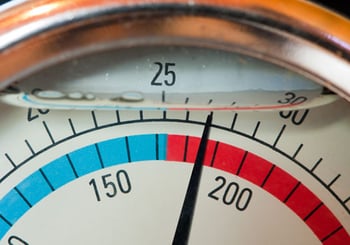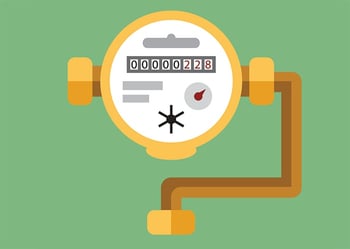What's Involved in the Process of Downsizing a Meter?
- Home
- Team EJP Blog
- What's Involved in the Process of Downsizing a Meter?
- Mar 11, 2019 9:52:23 AM
- Everett J. Prescott
It's pretty common to expect that when you're working in the water utility industry, you're going to get some water and revenue loss due to leaky transmission mains and meter problems. But what if downsizing your water utility's meters across the network could ensure you'd regain a lot of those lost profits by more accurately recording water usage? In this post, we'll talk about several real-world examples where downsizing a meter helped the water utility to greatly reduce unrecorded water usage and increase profits by a significant margin.

What if your water utility could save over 400,000 gallons of water every day, just by simply downsizing the meters in your supply system? It may sound like something that's just too good to be true, but the City of Boston did exactly that. The city invested in its infrastructure by downsizing 400 meters and discovered that they'd gained over 1,000 gallons every day in lost revenue from each new meter that was installed. Not only did this account for a significant amount of lost water that has previously been disappearing into the system, it allowed the city to gain back almost $2 million in lost revenues.

Boston isn't the only place where utilities are saving money through meter downsizing. In countless water utilities across the nation, homeowners have the ability to request a meter downsize. Utilities are promoting this by allowing them to receive lower rates. One homeowner recently cited a change from a 1" meter to a 3/4" meter. The change cost the homeowner about $400, but it also lowered her bill by $35 per month, so the cost of the work was paid for in under a year, allowing her to enjoy her savings long into the future. But exactly how can something as simple as downsizing your meter result in significant savings being realized by both water utility companies and the everyday homeowner and business owner? There are several different reasons why both parties can realize significant savings:
- Smaller meters are able to accurately record the amount of water flowing through. This, in turn, means there are fewer mis-measured water flow losses, leading to more accurate revenues.
- When a properly sized meter is used, it's less likely to fail, improving reliability and with fewer customer issues. This equals less maintenance being required, giving the utility lower overhead costs, a smaller number of customer service complaints and better overall performance.
- Interested in sub-metering? Meter downsizing allows for metering individual units in a multi-family building or business compound. This means in an apartment or strip mall, you'll pass on more accurate costs to each individual unit, preventing arguments between neighbors.
When homeowners or businesses agree to use downsized meters, many utilities offer a lower base rate every month in compensation. The end user can choose to save money while reducing their water consumption at the same time. This provides the water utility with the appearance of working to save money for the customer instead of just requiring them to downsize meters across the board.
When you work to downsize your existing meters, your water utility is able to see serious gains both now and in the future. If you're still not sure whether downsizing your meters is the right path for your water utility, Team EJP is standing by to help with the process. If you have questions or need more information about how downsizing your meters will improve your water utility, please contact us today.








